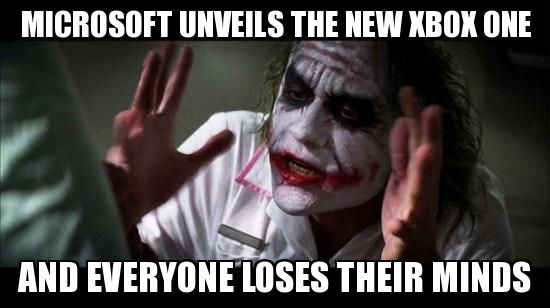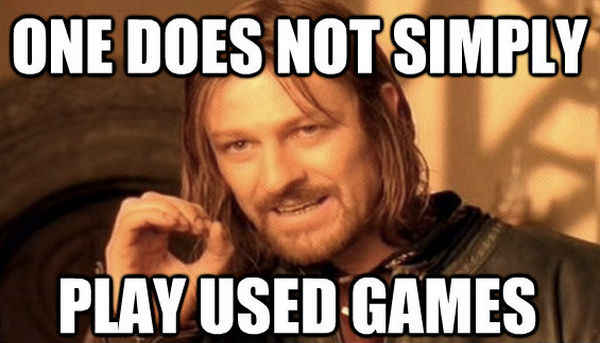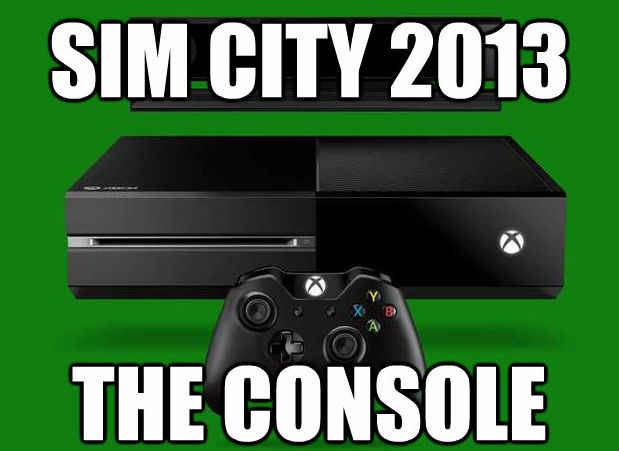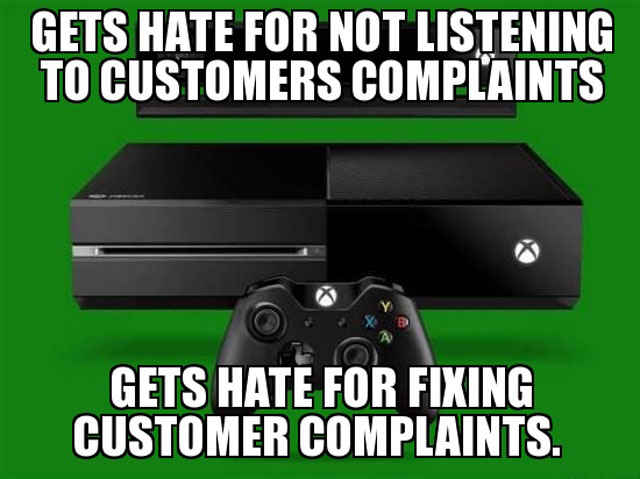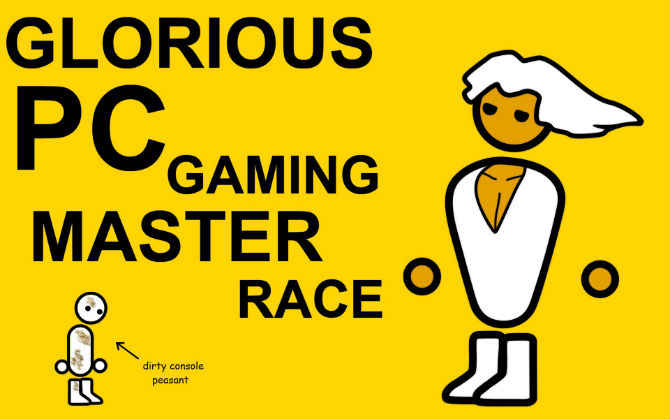The Xbox One fiasco through the eyes of a PC gamer
How Microsoft's terrible communication strategy scuttled the Xbox One from becoming a PC.
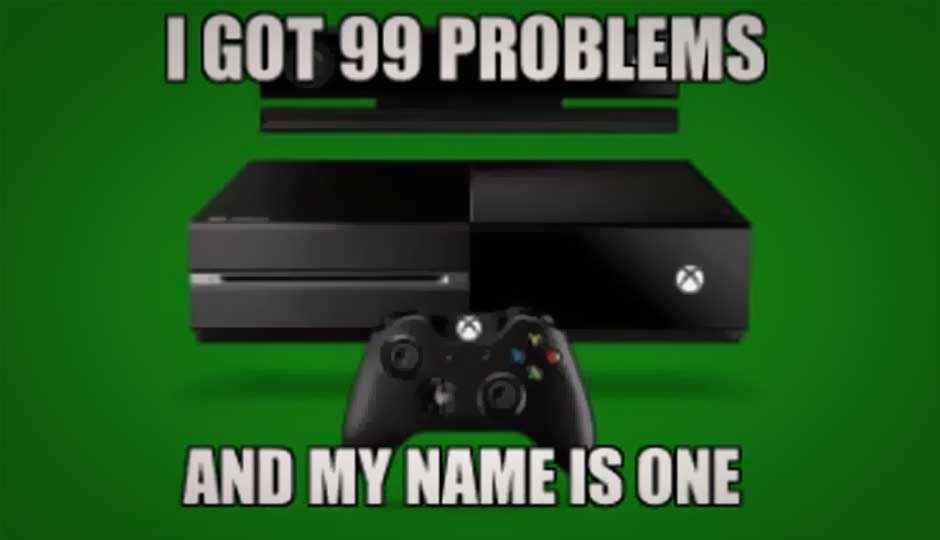
Schadenfreude: enjoyment obtained from the troubles of others.
 Survey
SurveyAs a person who games exclusively on the PC, schadenfreude came easy courtesy the massive blowback that Microsoft received after it unveiled the Xbox One. This is because PC gamers singularly despise the consol-ization of games- the practice of ‘dumbing down’ games to make them more ‘accessible’ to the console crowd. It wasn’t just me either; the Internet was rife with PC gamers making fun of the entire mess, prodding Microsoft for turning its back on PC gamers to focus on the console. What made the entire situation deliciously ironic was that Microsoft wanted to make the Xbox One work more like a PC, with features that an entire generation of PC gamers take for granted, thanks to the ubiquity of Steam.
But amidst the noise and fury of the criticisms hurled at Microsoft and the catcalls by PlayStation fans and PC gamers, did we really understand why the Xbox One was so bad for users? Or were we all just so intent at watching Microsoft brought down to its knees, that we just went along with the mob?
The Used (and the Confused)
The biggest accusation levelled at Microsoft has been that the Xbox One would cause the extinction of used games. With Xbox One, every new game sold would be linked to an account which would mean that reselling a game was no longer a simple process. After all, if I bought a physical copy of a game, linked it to my Xbox Live account and then sold the disc to you, you would only be able to install the game on your Xbox One but nothing beyond that. Console gamers, unlike PC gamers, are used to the concept of selling their old games and buying second hand ones, so the reflexive reactions were pretty natural. However, Microsoft appeared to be caught unawares by the intensity of the criticisms, something that it should have been ready for.
It was only much later that Microsoft’s vision with respect to used games became clearer when executives decided to talk to the press to clear the confusion. Microsoft wanted to set up a digital storefront which would allow users to trade games that they had purchased. Unfortunately, while this concept sounded great, Microsoft just refused elaborate on its plans. Questions like- ‘how will the price of a second-hand game be determined?’ or ‘in case of a trade, how will the games in question be valued?” continue to go unanswered.
In the world of PC gaming, trading used games is no longer something that holds importance because by the second or third week of a game’s release, most games are sold at a discount at a price lower than that offered by used games stores. This is because game publishers don’t mind selling games at a lower price in the future because they know that they’re getting money from every game sale. If the Xbox One adapted the Steam model to work with used games too, so that reselling a game through an official store would mean that publishers get the money for every sale, it’s likely that console gamers would also enjoy discounted games like PC gamers. Unfortunately, this is just an assumption because Microsoft never made it clear that this was its intent.
Let’s (Not) Get Physical
The debate on used games highlights only a part of what was supposed to be one of the biggest changes that the Xbox One would bring to the console gaming landscape- the move to digital distribution. So far, consoles have primarily relied on physical discs but Microsoft wanted every game available digitally on the Xbox One. While there are disadvantages to digital distribution, like having no (or limited) ability to share games and complete dependence on the companies hosting the games (for instance, if Steam servers ever go down, you will be unable to access those games that aren’t already installed on your hard drive), digital distribution also brings with it a lot of convenience. Just ask any PC gamer who uses Steam.
With a digital library, you no longer have to deal with damaged discs that force you to buy a new copy of the game; your games are automatically updated and the developer can directly push content to you instead of hosting it on a site and hoping that you come across the link. I personally prefer the ease and convenience afforded by Steam to the alternative of physical discs. As something that has existed on the PC since the release of Half-Life 2 in 2004, and used widely for music (iTunes) and books (Amazon), it appears strange that digital distribution will continue to get step-motherly treatment from consoles for a while.
Get Yourself Connected (Every 24 hours)
If the announcement surrounding the Xbox One’s treatment of used games wasn’t enough to piss everyone off, it was the mandatory online check every 24 hours that acted as the straw that broke the camel’s back. Microsoft appeared unbelievably arrogant when it announced that the Xbox One was meant only for gamers who could ensure that they had Internet connectivity, at least once, every 24 hours and the rest could buy the Xbox 360. While by itself, that requirement didn’t seem particularly stringent, it was recognized as Microsoft’s hubris by a vast number of gamers who were, by now, vehemently against the new Xbox.
The fact is that Microsoft, again, acted like the Black Knight from Monty Python, completely unwilling to recognize what was happening in front of it. With the strong anti-online DRM zeitgeist that arose in the wake of PC games like Diablo 3 and SimCity, this is another lesson that Microsoft should have learnt from PC gaming. The 24 hour mandatory check seemed obviously unfair to many gamers and Microsoft should have taken a page from Steam and increased that duration (Steam, for instance, only asks you to connect online about once a month and can also be used to play games offline). If there was one thing that truly caused the Xbox One irreparable PR damage, it was this mandatory online check.
The New Xbox Is Not ‘The One’
Of course, now it’s too late for Microsoft to change its message. After realizing the intense negativity surrounding the Xbox One, Microsoft decided to roll back most of its features. The Xbox One now stands as a console that’s more powerful than its predecessor but little else. The Playstation 4 seems content with playing that role (not that there’s anything wrong with it) and the future of gaming just seems a little less exciting.
Usually in real life, there aren’t many true villains, but in this case you can easily put all of the blame on Microsoft’s communication strategy. In the wake of the public outcry, the company acted like it belonged in the cast of a terrible Scary Movie installment. Thanks to the absence of a unified communication strategy from Microsoft, the Xbox One’s launch will rightly be recognized as one of the most inept and downright idiotic events in the history of personal technology.
And that makes me sad, because even now, after a decade of donning the role, the PC still remains the only helmsman steering gaming into the future.
For the record, I don’t believe in the above but you have to admit, it’s hilarious.
Agree, disagree with me? Tell me what you think on Twitter @postwar or in the comments section below.
